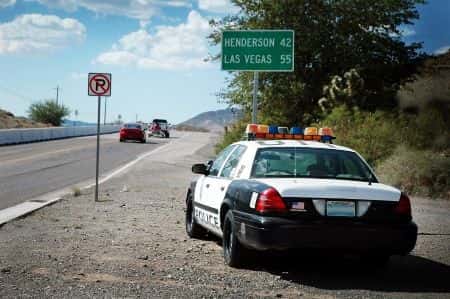Police Car Crashes Into Motorist During Chase
Updated on
This case involves a man who was going home one night after leaving his job as a truck mechanic. The man entered the expressway and headed west in the rightmost of four westbound lanes. The man later heard sirens and saw flashing lights coming from behind him and he put his turn signal on and pulled over to the right shoulder. The man saw another car that had pulled over onto the shoulder immediately in front of him so that he had to drive beyond that car to get onto the shoulder. A police officer who had been at the station heard a call over the police radio that a homicide suspect was being chased on the eastbound lanes of the expressway. The police officer decided to enter the chase without receiving permission from her superior and without notifying dispatch. The officer entered the eastbound lanes of the expressway and then heard that the suspect had turned around and was traveling in the opposite direction in the westbound lanes. The officer noticed a lot of citizen cars when she was entering the westbound expressway. The officer quickly changed from lane 1 to lane 2, immediately to the left. Then, the officer quickly changed back to lane 1. The officer tried to apply her brakes when she saw the man’s car pull out in front of her from the shoulder. She lost control of the police car after she applied her brakes. The officer had been weaving in and out of traffic for less than a minute before she hit the man. The officer spun through four lanes of traffic before crashing into the man’s car, flipping it over and upside down into an embankment. The man was left paralyzed from the waist down and suffered partial loss of use of both hands. The man suffered complications of paralysis, including ubiquitous ulcers and bowel and urinary problems.
Question(s) For Expert Witness
Are there rules a police officer must follow when chasing a suspect so that the officer does not cause an auto accident?
Expert Witness Response
 Usually, police officers must follow certain police department rules when chasing a suspect on the roads. Police officers who are engaged in motor vehicle pursuits must usually remain aware of the fact that motor vehicle pursuits are a serious matter with a potential for death and/or injury to other motorists and the officers themselves. When responding to an emergency situation, a police officer must always follow basic traffic safety practices and must operate their vehicle at a speed and in a manner compatible with weather conditions and local conditions to make sure that they maintain control of the vehicle at all times. The police officer in this case was negligent because she was not directed by dispatch to participate in the chase for the suspect and took it upon herself to do so without consulting a superior officer. Also, it is likely that at the time that the officer actually entered the chase, the actual pursuit may have been a considerable distance ahead of her position. Since there was civilian traffic in the road and the officer had to maneuver into different lanes as a result of the traffic in front of her, the officer most likely acted negligently by not adequately responding to the danger to other motorists.
Usually, police officers must follow certain police department rules when chasing a suspect on the roads. Police officers who are engaged in motor vehicle pursuits must usually remain aware of the fact that motor vehicle pursuits are a serious matter with a potential for death and/or injury to other motorists and the officers themselves. When responding to an emergency situation, a police officer must always follow basic traffic safety practices and must operate their vehicle at a speed and in a manner compatible with weather conditions and local conditions to make sure that they maintain control of the vehicle at all times. The police officer in this case was negligent because she was not directed by dispatch to participate in the chase for the suspect and took it upon herself to do so without consulting a superior officer. Also, it is likely that at the time that the officer actually entered the chase, the actual pursuit may have been a considerable distance ahead of her position. Since there was civilian traffic in the road and the officer had to maneuver into different lanes as a result of the traffic in front of her, the officer most likely acted negligently by not adequately responding to the danger to other motorists.
Subscribe to our newsletter
Join our newsletter to stay up to date on legal news, insights and product updates from Expert Institute.
Sign up nowFind an expert witness near you
What State is your case in?
Subscribe to our newsletter
Join our newsletter to stay up to date on legal news, insights and product updates from Expert Institute.


